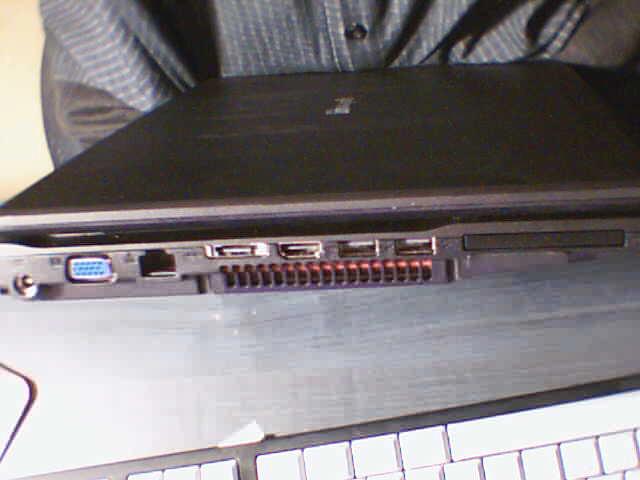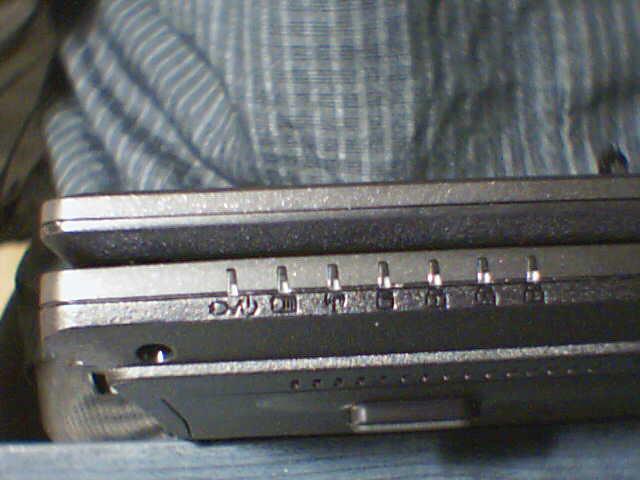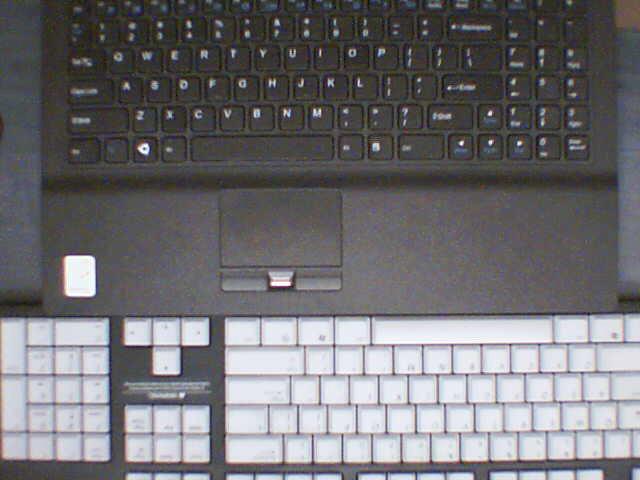First contact

I was a bit surprised by Ubuntu’s splash screen – it was in very low resolution and the logo was surrounded by some weird green artifacts. I was expecting graphic glitches – the laptop came with an ATI video card and I have yet to see one that works well in Linux Not that you can’t make them work, but the drivers are usually a mess to configure. Either you get feature X with the open source driver and forget about feature Y, or you get feature Y with the proprietary driver and forget about feature X. A Kobayashi Maru scenario, of sorts.
After the weird splash screen and a rather simple setup wizard, I was in the GNOME desktop. Everything was working fine, but the webcam wasn’t working. I later discovered that it was because of a hardware switch. The button is on the keyboard alright, but there is no visual indicators of the webcam’s status, which is kind of weird. Anyway, moving on.
On to Fedora
After a rather successful first boot (never mind the boot graphic glitch), it was time to mess it up. I already had a Fedora 13 Live CD ready just waiting to be put into the disc drive and a OpenSUSE one in Transmission. I wanted to see how the laptop handled different distributions.
Fedora’s installation went smooth. I chose the KDE version to add some spice to the experience. The display driver was working fine and the splash screen appeared correctly. However, I had no WiFi connection. I searched around for a solution, and I just had to download the driver from Realtek and compile it (I understand that compiling a driver ain’t something a user wants to go through – but I knew that some problems could appear by changing distros). After a little reboot, everything was working fine, until I unplugged the computer. I had about 50 minutes of battery life, on “powersave”.
I knew that the computer wouldn’t be a big battery saver, but 50 minutes seemed a bit abnormal. I checked the power management panel in KDE to learn that CPU frequency scaling was not working because the hardware wasn’t correctly detected.
That’s where me and Fedora parted ways. I can have hitches on the network card, sound card or even graphic card, but when it comes to power management, I don’t want to mess around. Especially not on a laptop. My OpenSUSE DVD download wasn’t quite finished when I went back to my trusty desktop tower. I then had the idea of trying Kubuntu instead. I had a lot of confidence in OpenSUSE, but having worked with Ubuntu and Kubuntu for a couple of years, I felt more comfortable to go back to *buntu land.
Back home
It was also a matter of drivers. I know that drivers can be installed separately, should there be any need to do so. I haven’t tried OpenSUSE, but it would probably have worked – and should it have had some problems, nothing would be impossible to fix. However, system76 provides the necessary drivers themselves inside a deb repository of their own.
Laziness kicked in and I fired the installation of Kubuntu 10.04, adding the system76 software repository myself in kpackagekit. That is when I discovered that the fglrx driver was somewhat messing everything up. It was not installed by default so the open source driver was used. The splash screen was beautiful and the desktop compositing was working. However, when I activated the fglrx driver, the splash screen went low resolution and compositing was messed up.
After I reverted everything to the original configuration, everything was up and running. I had a couple of hitches with network management. I cannot determine if my network problems are due to the WiFi card or just the software acting crazy – I’ll have to read on the subject. Personally, I had very… varied experiences with networkmanager and its derivatives (it is kind of my PulseAusio, for those who had problems with that piece of software).
First impressions
When I first saw the laptop, I really liked what I saw. It’s dark grey, clean, no stickers (I must admit, I added the bundled “Powered by Ubuntu” sticker on it, for the heck of it), no fuss. Its simplicity is just beautiful. However, it’s not perfect. I found the LED status lights (num lock, WiFi, hard drive, battery…) awkwardly placed, not to mention the absence of a webcam activity indicator.

The keyboard is marvelous. It’s close in layout to what you’d have on a full size keyboard and it works like a charm, not to mention the presence of a numerical pad. The keys on the keyboard feel good, despite producing a somewhat “cheap” plastic-ish sound. I still have to familiarize myself with the touch pad. The pad is studded with very small dots forming a grid on its surface, providing an interesting tactile feedback, especially when searching for the scroll zone, which is all smooth. However, the cursor sometimes jumps from one place to the other without apparent reason – adjusting the pad’s sensitivity seems to correct the problem.

The laptop has a fingerprint reader. It is not “working” by default and I have no plans to configure it. I haven’t searched the documentation to activate this gadget yet. There is documentation on system76’s wiki to use the biometrics stuff in Ubuntu. Anyway, it should be viewed as a extra when buying the laptop. system76’s Web site mentions that it is in a beta state.
I had a non negligible amount of trouble running Kubuntu. However, I don’t think it’s related to the laptop but more the distribution being a bit unstable. Everything is configured, but sometimes, I fire up Kubuntu, I see the splash screen, enter my hard drive password and then it’s all black. Curiously, I can adjust luminosity and press the power button to see the shutdown process activate in a terminal. Maybe it’s KDM related, maybe it’s a driver, I do not know. I’ll have to work with it for a longer period of time.
All in all, I love the laptop. My first impressions may give you the idea that it’s buggy – consider that I didn’t give the laptop much chance. First thing I did was to replace Ubuntu with a completely different distro without prior search on the hardware, then got back to Kubuntu with a semi-manual installation of system76’s drivers. Despite all this, the laptop managed to work pretty well.
The Pangolin Performance is a fine machine. I have yet to do some “real work” on it, but up to now, it exceeded my expectations. It shows that it was built for Linux : the multimedia keys works, brightness adjustments works smoothly and power management is working fine. Not to mention that all the hardware is working. It may seem obvious, but these are the little things that I usually expect not to work when installing a GNU/Linux distro on a laptop built for Windows. And these little things, they work on the Pangolin Performance.
Now how will the laptop fare in the long run? Time will tell. It would be premature for me to declare right now that the Pangolin Performance is a great machine and a safe bet – I haven’t played with it enough. But if you look for a Linux laptop, system76 is definitely worth considering.





